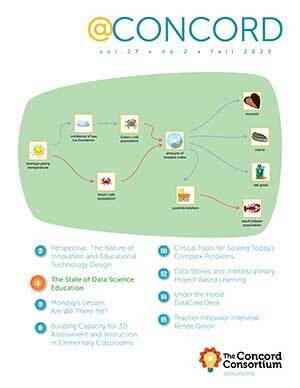Innovator Interview: Steve Roderick

As a biology major at Boston University, Steve planned on becoming a marine biologist. After spending his junior year in New Zealand and Australia, studying crown-of-thorns starfish on Heron Island, he thought he was one step closer to that goal. But a mix-up with college credits changed everything.
To recoup some lost credits, he enrolled in a summer course called AESOP (Arts and Environmental Science Outline Program) that met on a barge behind the New England Aquarium. The professor invited local professionals to share their work and serve as mentors for student-created projects. When someone from Jay Forrester’s group at MIT presented his work on systems dynamics, Steve was hooked. “This was 1971, the year The Limits to Growth was published,” he recalls. “I was totally enamored.”
During the summer with Forrester and his team of graduate students, Steve realized it was not just systems dynamics that fascinated him, but also the approach to teaching he was experiencing through the AESOP program. Following college graduation, Steve taught environmental education courses outdoors, then did a one-year stint filling in for a biology teacher on maternity leave before moving to Cali, Colombia, to teach chemistry and math at an international school.
After returning to the U.S., Steve completed a master’s degree in biology and environmental policy at Tufts University, before beginning a thirty-year teaching career at Lincoln-Sudbury High School, where he ultimately became the science department chair. He’s especially proud of an environmental issues elective he created. “We basically would just do projects around town,” he says, starting at the Conservation Commission to find out what was needed—from certifying vernal ponds to lobbying for wildlife corridors. His students had access to a forest and river near the school, but Steve also found opportunities to get to the sea, taking them on field trips to Nahant and Plum Island.
While teaching, he kept in touch with Forrester and was always looking for ways to bring systems thinking to his high school classes. In 1996 he spent a sabbatical year at MIT, where he took classes with systems scientists John Sterman and Jim Hines at the Sloan School of Management. He notes, “It makes so much sense to think of the world in terms of accumulations, rates of flow, and feedback. It simplifies things.”
Steve is now part of the group developing our SageModeler systems modeling tool. Building static equilibrium models, he says, is extremely intuitive for students. “Teachers like having their kids visualize their thinking about something complex and the way it works.” But he admits that making the leap to thinking dynamically can be a big challenge.
Steve is also helping teachers on the InquirySpace project bring more authentic science experiences to their classes. He was thrilled to hear a teacher describe her students’ “a-ha” moments using CODAP to “move data all around” because he recognizes the power of that to inspire other teachers. “When you see a teacher get excited, the eyes of other teachers light up.” It’s all part of a system with feedback loops.
He hopes to instill that awareness of systems to connect things, people, and ideas in students. “I fundamentally believe that science education should include the study of how science intersects with social issues. Systems is a great way to do that.” He continues, “It’s our world. We have to understand that everything we do has ramifications elsewhere.”
When Steve retired from teaching in 2016, he joined the Concord Consortium. He also bought a sailboat. Having learned to sail during summers at his grandfather’s beach house in Fairhaven, Massachusetts, he now laughs, “This is me being a kid again.” And he still dreams of becoming a marine biologist.
